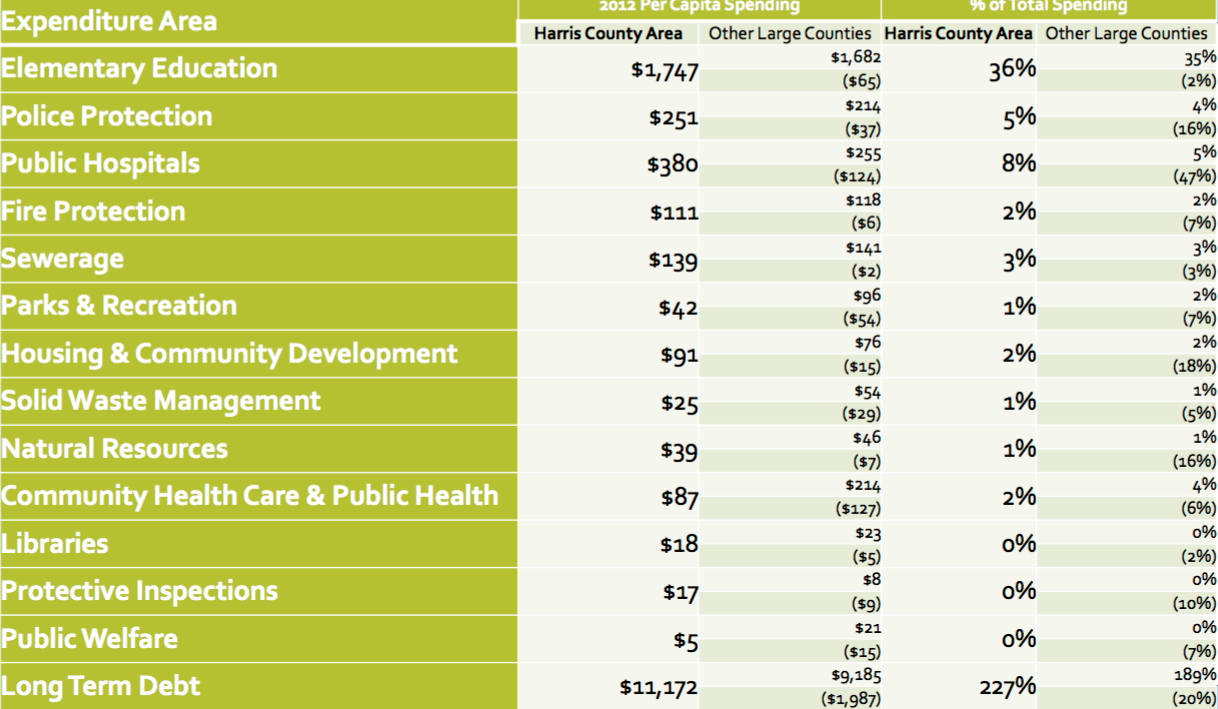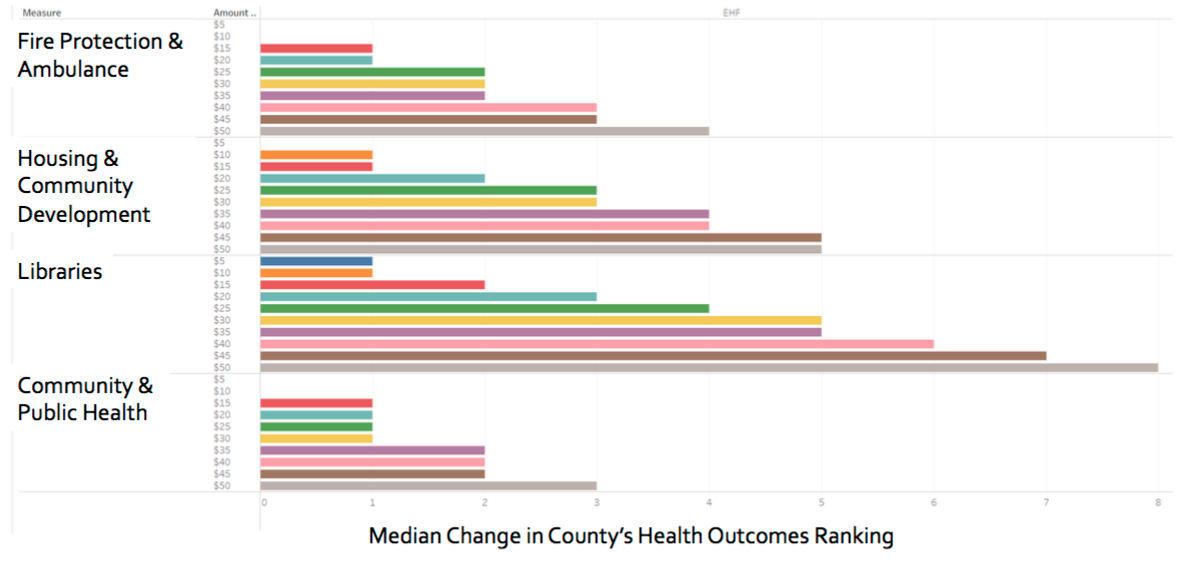In the United States, people spend a lot on healthcare: roughly 17.6 percent of the gross domestic product, according to a 2010 analysis by the Organisation for Economic Co-operation and Development. But our outcomes don't track with our spending. Though a library might not seem directly connected to an area's health, a new study from the Episcopal Health Foundation suggests per capita spending on libraries and other social services might be tied to improved health outcomes. The analysis, which looked at county-level outcomes and spending across the country, examined how per capita spending on everything from education to police and housing related to things like premature mortality, physical and behavioral health status and low birthweight, as well as obesity, smoking rate, environmental quality and socioeconomic factors.
"We are overinvesting in health care services and underinvesting in other areas that drive health outcomes," said J. Mac McCullough, the study's co-author as well as an assistant professor at Arizona State University and a health economist with the Maricopa County Department of Public Health. The study was co-authored by Jonathon P. Leider.
Looking nationally, the authors identified five different types of counties depending on their overall wealth, health and social service spending as a percentage of total local government spending. And it wasn't simply a one to one relationship between spending and improved health. "That suggests there may be different patterns of investment that are associated with good health outomes," said McCullough. But there were some patterns that emerged. "The healthiest counties tended to allocate a little bit more for public health, parks and recreation, sewage, fire and ambulances, libraries and actually less for housing and community development," he said. McCullough cautioned, however, overinterpreting the data and emphasized that each county had its own context to consider when evaluating spending and outcomes. "There's not one of these outcomes that everything was changing and there's not one service that changed everything," said McCullough. In the end, he said, "Only some social services had positive associations, but none had negative associations with overall ranking."
In Harris County, the authors found that local government spending was roughly in line with that of other counties with large populations in terms of percent. So, Harris County governments spent roughly $1,747 per capita on education or 36 percent of the total budget which lined up with the 35 percent of overall budgets that other large counties spent on education in 2012.

Source: J. Mac McCullough.
"You can see our communities' decisions on these charts," he said. In Harris County spending on "fire and protection, housing and community development and libraries and community health, all were associated with a positive change in the county’s health ranking."
McCullough then modeled how incremental increases in per capita spending by category would affect the county's overall health outcomes ranking within four years, a palatable, politically relevant timespan. "The effect sizes are somewhat modest," he said, "but it's amazing that you can see anything at all, to the extent that we believe this. You can spend five bucks more [per capita] on libraries and your county’s health would actually improve. If that’s true, I think that’s so cool."
In addition to the report for the Episcopal Health Foundation, McCullough created an interactive, online dashboard.
Though he said the model is open to refinement, McCullough said it holds potential for policymakers. "We’re getting toward being able to use this data to help with decision making and sort of model out the impact," he said. The findings also underscore the complicated processes that produce improved health outcomes in communities.
With a more clear connection between public spending and health, he said the public and the policymakers can better understand the various inputs that contribute to public health. "I think we may be able to think of this as a health dividend for a lot of these investments," he said.

